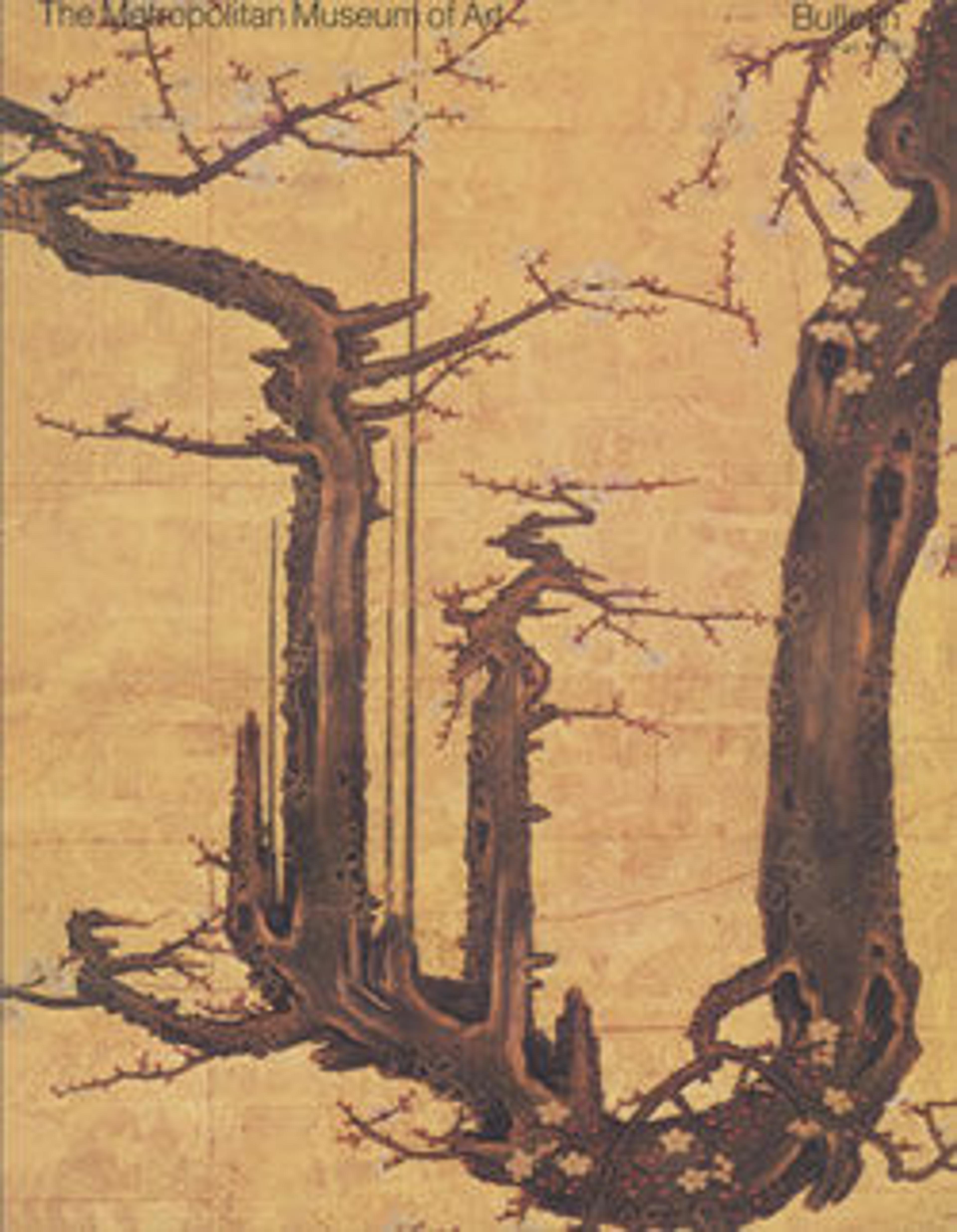The Torii Gate of Gion Shrine
This bird’s-eye view of the entrance to Gion Shrine, known today at Yasaka Shrine, offers a lively scene of seventeenth-century Kyoto. Entering and leaving through the red torii gate are festively clad citizens of various classes. In the street market nearby, vendors enjoy a bustling trade selling fish, rice cakes, and tobacco. Such activities are among the pleasures still associated with visits to the shrine, which is famous for its buildings that assimilate Buddhist temple architecture. The shrine is also recognized for its prominence during the Gion Matsuri, Kyoto’s most important festival. A six-panel screen (Suntory Museum, Tokyo) and two-panel screen (Museum for East Asian Art, Cologne) depicting the festival and its setting matches The Met screen in figure style, composition, and treatment of landscape and cloud patterns, indicating that this painting was once part of a llarger painted sliding-door composition.
Artwork Details
- 祇園大鳥居屏風
- Title:The Torii Gate of Gion Shrine
- Period:Edo period (1615–1868)
- Date:early 17th century
- Culture:Japan
- Medium:Sliding doors (fusama) remounted as a two-panel folding screen; ink, color, and gold on paper
- Dimensions:60 in. × 64 1/4 in. (152.4 × 163.2 cm)
- Classification:Paintings
- Credit Line:Gift of A. I. Sherr, 1960
- Object Number:60.164
- Curatorial Department: Asian Art
More Artwork
Research Resources
The Met provides unparalleled resources for research and welcomes an international community of students and scholars. The Met's Open Access API is where creators and researchers can connect to the The Met collection. Open Access data and public domain images are available for unrestricted commercial and noncommercial use without permission or fee.
To request images under copyright and other restrictions, please use this Image Request form.
Feedback
We continue to research and examine historical and cultural context for objects in The Met collection. If you have comments or questions about this object record, please contact us using the form below. The Museum looks forward to receiving your comments.
